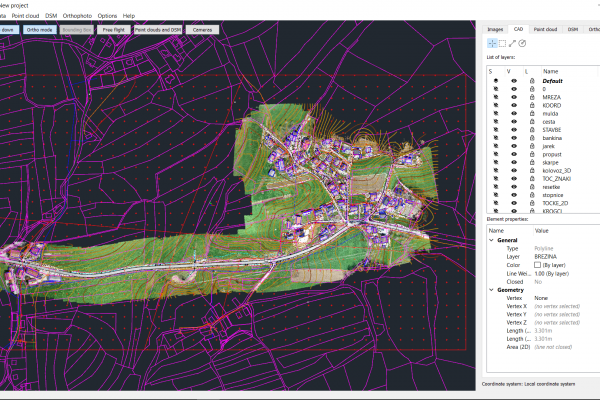
Drone-based surveying for the construction of a town sewage system
Most surveyors combine their terrain and office work. Often, the result of such is a survey map. 3Dsurvey software was developed by surveyors for surveyors, who realised that the work process could be sped up by utilizing the new approach of drone-based surveying.
The work process is usually done in two steps. Gathering information and measurements on the terrain and later using those measurements to produce maps. The following showcase will briefly explain the benefits of 3Dsurvey.
TRADITIONAL SURVEYING
The traditional terrain work is usually time consuming. This is because there are a few steps that need to be followed in order to get best results. This includes measurements of the terrain, objects on the terrain, municipal infrastructures and of natural barriers.
Main issues of traditional surveying
The main issues of traditional surveying (NON UAV-based survey work):
- For one simple residential building the work on the terrain could take 2 hours or more. However, for larger areas, as for example 1km of a road in a fairly inhabited area, it could also take everything from 1 to 3 days.
- By accident it can often happen that some major detail points are not measured. In this case the surveyor would have to return to the terrain and measure the missing information.
- Most measurements are done by hand – point by point. The surveyor visits the terrain and draws a sketch of the terrain and after that, he draws in the points which have to be measured.
DRONE-BASED SURVEYING
This use case shows a modern state-of-the-art company’s work regarding drone mapping terrain for the construction of a sewage system in a town. For completion of this project they needed to measure the area and make a survey map which then served as a basis to complete the project.
Technical characteristics:
- The length of the road: 1.3km
- Size of the area: 20 Ha
- Number of flights: 3 flights (1250 photos taken)
- Number of GCPs: 24 – measured with a Total station
- Flight height: 80m

WORKFLOW
On-site
- Placing and measuring of 24 GCPs on the terrain
- Measuring of certain details, which are hard to determine on the point cloud. For example, corners of some buildings. All other details were obtained on photogrammetry data. There was no need to do a sketch of the terrain beforehand.
- Drone flight to measure the data.
Time spent on the terrain: 8 h; 2 persons

Office
- Calculation of the data in a classic way – GCP points and corners of the buildings.
- Calculation of the data from the drone (images), and further calculation of:
- Point Cloud
- Digital Surface Model
- Orthophoto
3. Obtaining analytical data with the aid of 3Dsurvey software:
- Contour lines – DSM tab
- 3D characteristic lines (roads, escarpment, cultural borders, buildings, additional objects, manholes, fences…)
- Spot elevation points
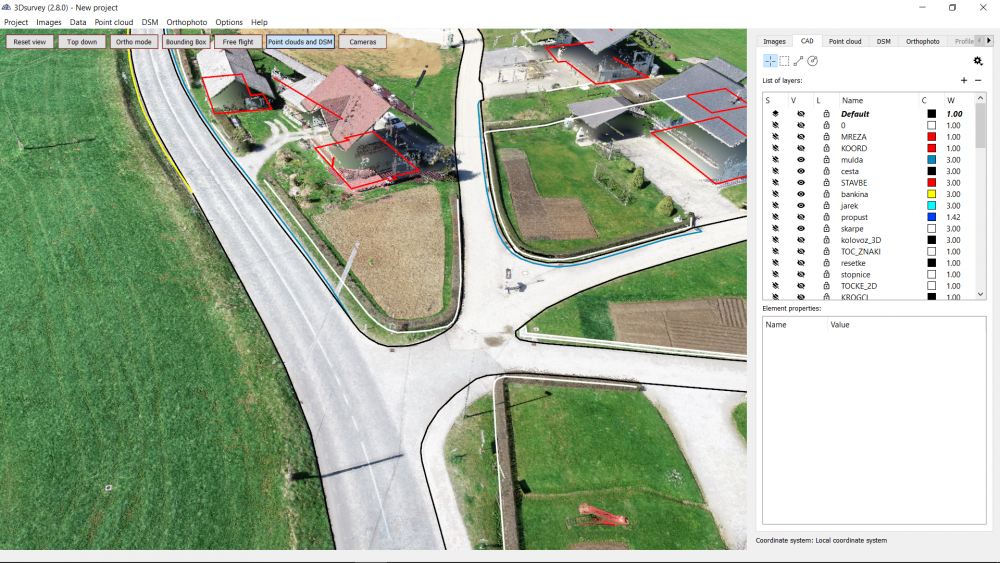
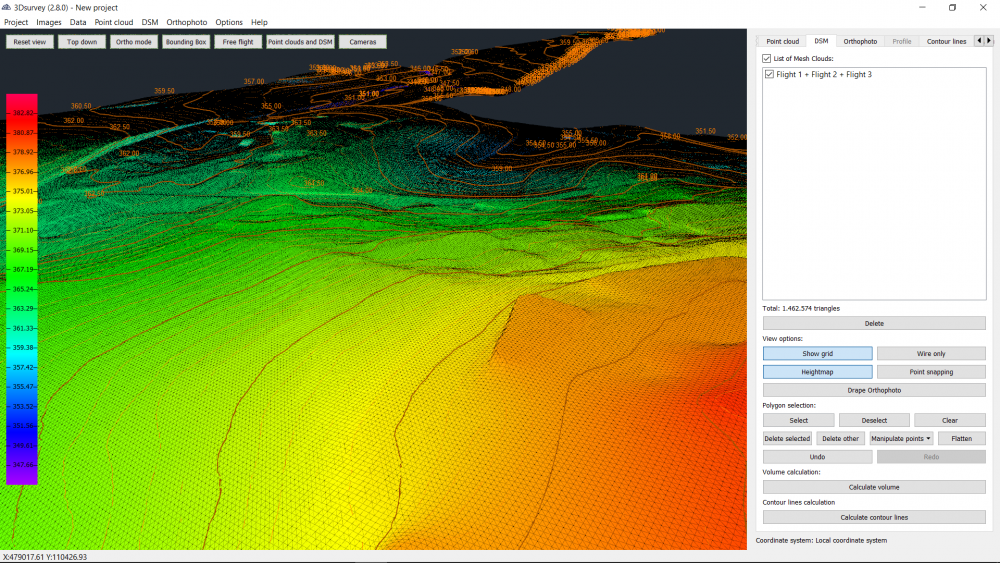
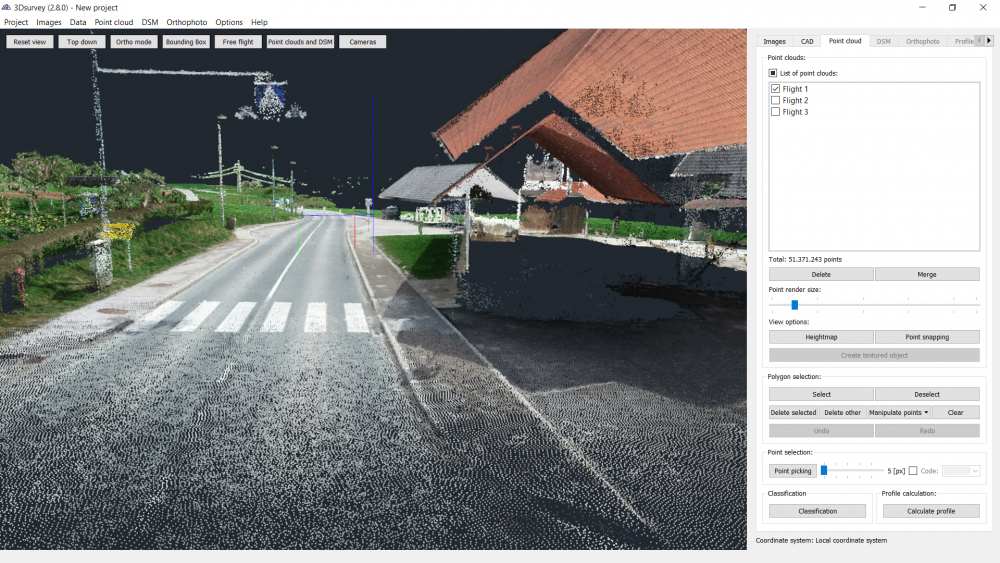
Prepared CAD data in 3Dsurvey is directly compatible with most CAD software on the market. In this instance we exported layers as .dxf and then imported them in the AutoCAD.
- Adding topographical signs (manholes, electricity, canalisation, public lightning,…), banks and all types of objects.
- Preparation for printing.
To sum up: the terrain work is more than 3 times faster using drone-based surveying.
Findings
Timewise the office work is similar as more data has to be calculated. However, the results are much more complete and visually upgraded. The final results include the measured surrounding area of the territory. This means that there is no need to revisit the area. Any additional information is simply a click away and easily done from the office.
3Dsurvey offers an all-in-one solution: CAD drawing, accurate digital surface model and high resolution orthophoto. These are very valuable and indispensable tools for every surveyor and construction company.

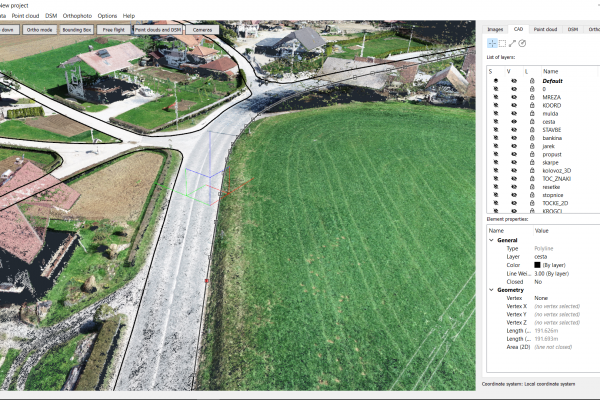
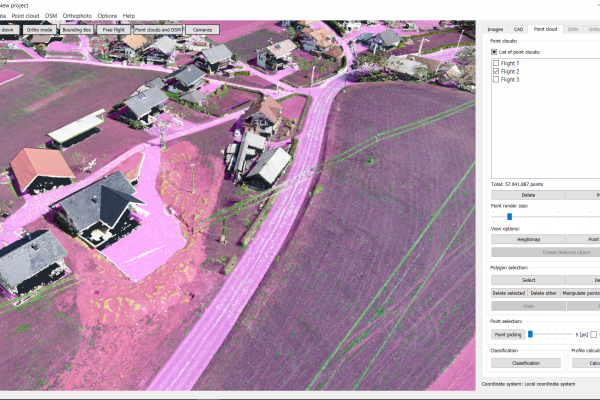
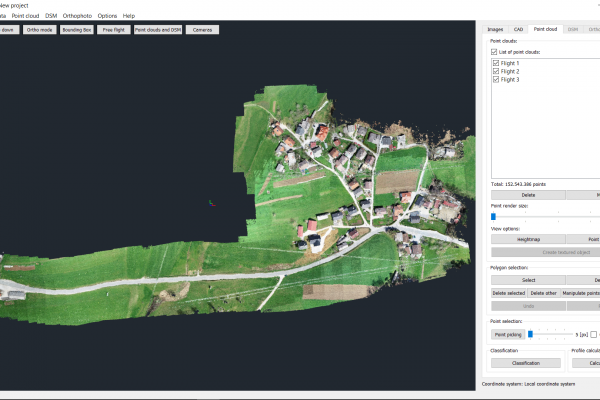
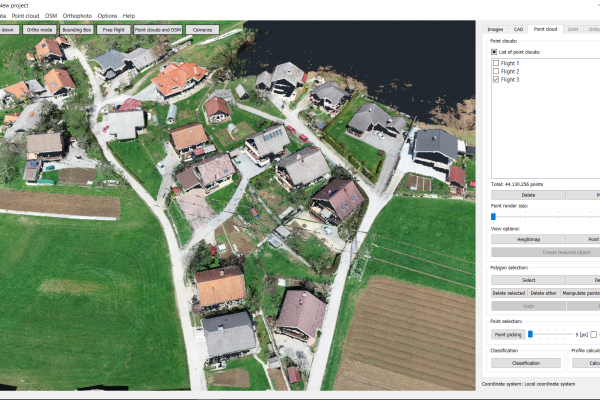
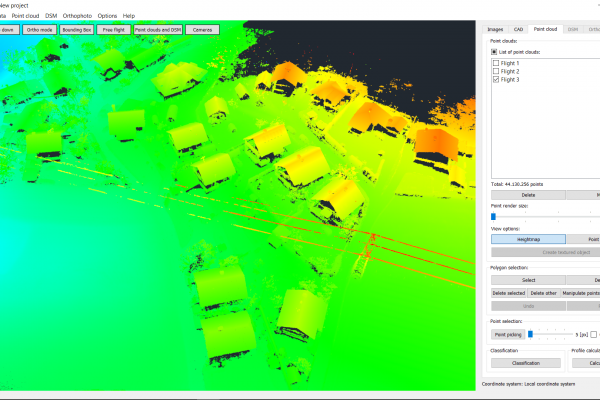
To try 3Dsurvey for yourself, sign up for a 14 day free trial.

